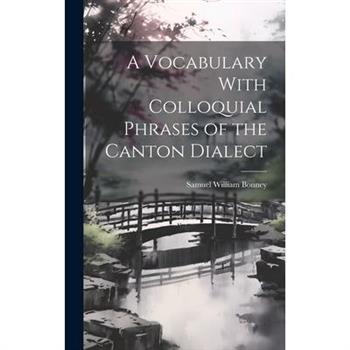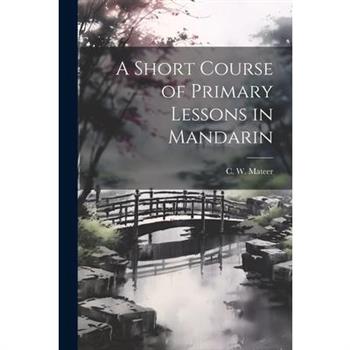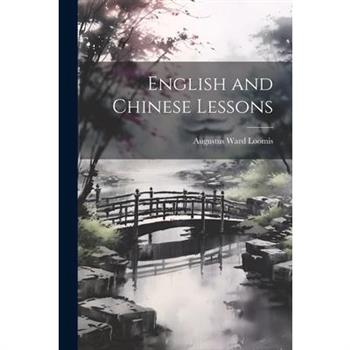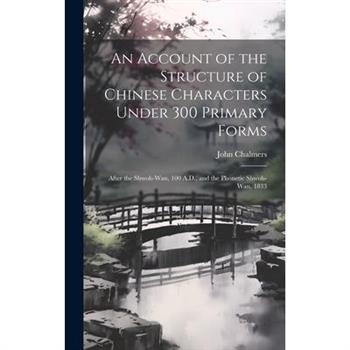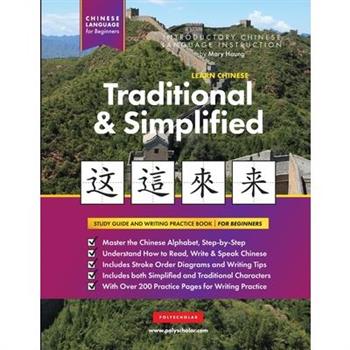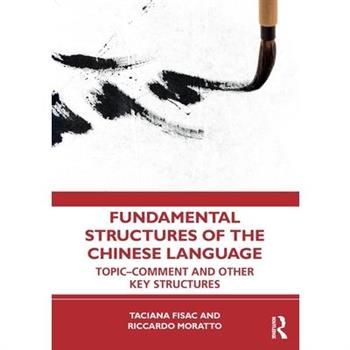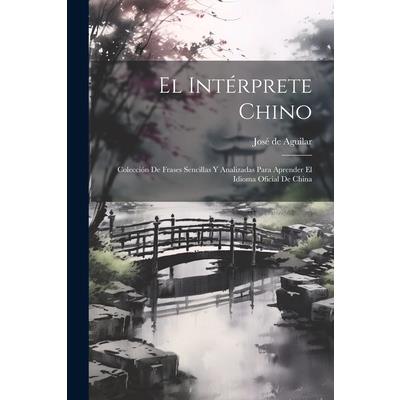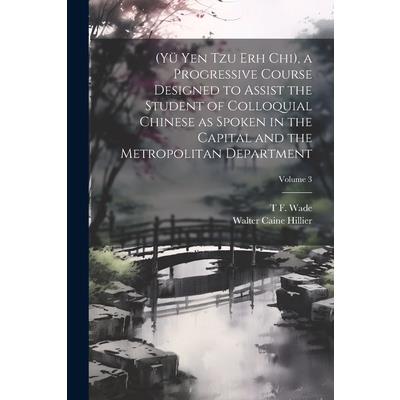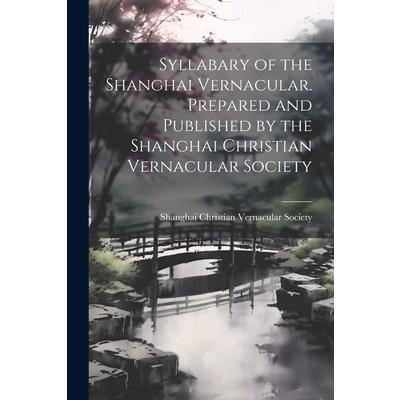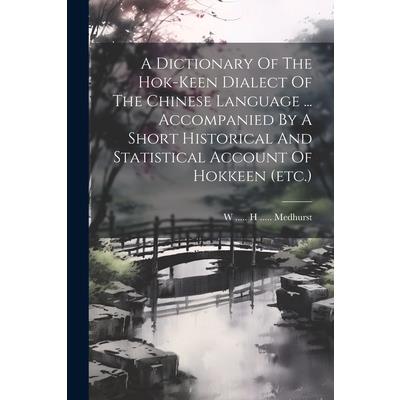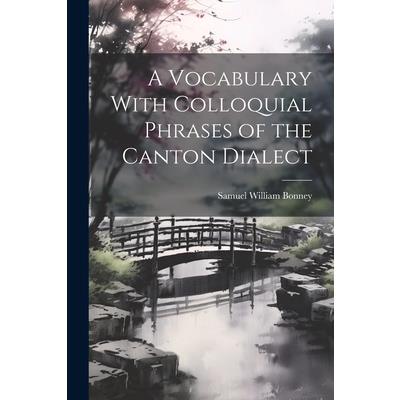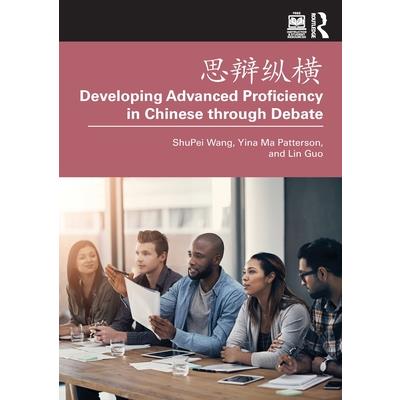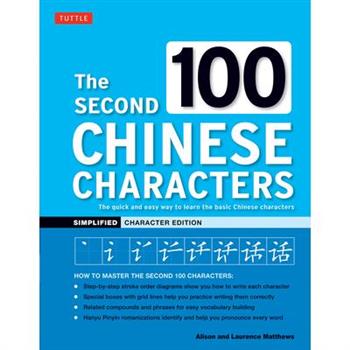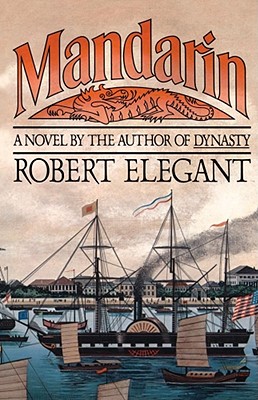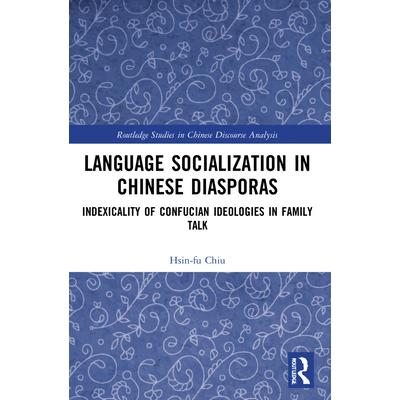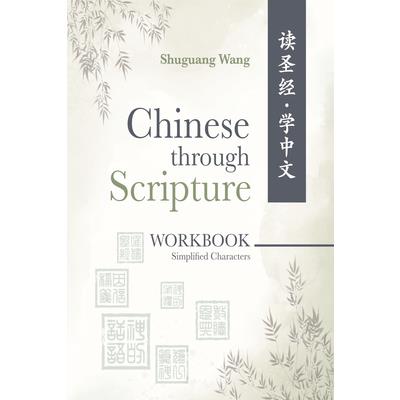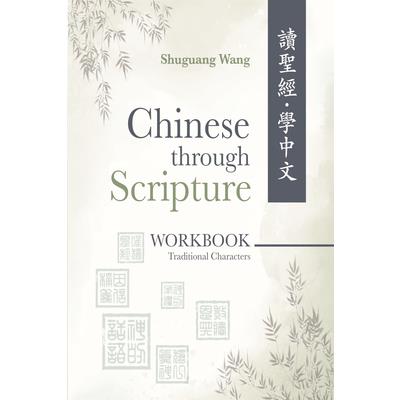The Translator’s Mirror for the Romantic
The Translator's Mirror for the Romantic: Cao Xueqin's Dream and David Hawkes' Stone is a book that uses precious primary sources to decipher a master translator's art in Stone, a brilliant English translation of the most famous Chinese classic novel Dream. This book demonstrates a bilingual close reading which sheds light on both the original and its translation. By dividing the process of translation into reading, writing, and revising, and involving the various aspects of Sinological research, textual criticism, recreation, and literary allusions, this book ventures to emphasise the idea of translation as a dialogue between the original and the translated text, between the translator and his former self, and a learning process both for the translator and the reader of his translation. Any student of Chinese language and literature, or Chinese-English translation, will benefit from this book; for students and scholars who want to study David Hawkes and his Stone, this book is an indispensable aid. Readers will be interested to see how a non-theoretical analysis could be used to evaluate this translation, for it makes an extremely important and useful contribution to this subject.
Zhoutun
This book presents a description of the grammar of Zhoutun, an endangered Sinitic variety spoken by less than 1000 people in the Qinghai Province of northwest China. With vocabulary predominantly from Chinese and Tibetan syntax, Zhoutun is one of the Sinitic varieties most distant from Standard Chinese.
Syllabary of the Shanghai Vernacular. Prepared and Published by the Shanghai Christian Vernacular Society
This fascinating book is a guide to the Shanghai vernacular, a dialect of Chinese that was widely spoken in Shanghai and the surrounding areas in the early 20th century. It includes a pronunciation guide, grammar rules, and a glossary of commonly used words and phrases.This work has been selected by scholars as being culturally important, and is part of the knowledge base of civilization as we know it.This work is in the "public domain in the United States of America, and possibly other nations. Within the United States, you may freely copy and distribute this work, as no entity (individual or corporate) has a copyright on the body of the work.Scholars believe, and we concur, that this work is important enough to be preserved, reproduced, and made generally available to the public. We appreciate your support of the preservation process, and thank you for being an important part of keeping this knowledge alive and relevant.
Western Mandarin; or, The Spoken Language of Western China
This book is a comprehensive guide to the Western Mandarin language as spoken in Western China. It includes a detailed syllabic and English index, making it an ideal resource for students and travelers alike. Adam Grainger's clear and concise explanations of grammar and vocabulary make this an essential guide to mastering the language.This work has been selected by scholars as being culturally important, and is part of the knowledge base of civilization as we know it.This work is in the "public domain in the United States of America, and possibly other nations. Within the United States, you may freely copy and distribute this work, as no entity (individual or corporate) has a copyright on the body of the work.Scholars believe, and we concur, that this work is important enough to be preserved, reproduced, and made generally available to the public. We appreciate your support of the preservation process, and thank you for being an important part of keeping this knowledge alive and relevant.
A Vocabulary With Colloquial Phrases of the Canton Dialect
Looking to learn the Cantonese dialect? Look no further than this comprehensive vocabulary guide by Samuel William Bonney. With over 2000 phrases and expressions, including colloquialisms and slang, this book is the perfect starting point for anyone seeking to communicate effectively in Cantonese.This work has been selected by scholars as being culturally important, and is part of the knowledge base of civilization as we know it.This work is in the "public domain in the United States of America, and possibly other nations. Within the United States, you may freely copy and distribute this work, as no entity (individual or corporate) has a copyright on the body of the work.Scholars believe, and we concur, that this work is important enough to be preserved, reproduced, and made generally available to the public. We appreciate your support of the preservation process, and thank you for being an important part of keeping this knowledge alive and relevant.
A Dictionary Of The Hok-keen Dialect Of The Chinese Language ... Accompanied By A Short Historical And Statistical Account Of Hokkeen (etc.)
Written by noted British Sinologist W. H. Medhurst, this comprehensive dictionary is an invaluable resource for scholars working with the Hok-keen dialect of Chinese.This work has been selected by scholars as being culturally important, and is part of the knowledge base of civilization as we know it.This work is in the "public domain in the United States of America, and possibly other nations. Within the United States, you may freely copy and distribute this work, as no entity (individual or corporate) has a copyright on the body of the work.Scholars believe, and we concur, that this work is important enough to be preserved, reproduced, and made generally available to the public. We appreciate your support of the preservation process, and thank you for being an important part of keeping this knowledge alive and relevant.
A Short Course of Primary Lessons in Mandarin
Originally published in 1883, this book provides a simple and practical introduction to the Mandarin language for English-speaking learners. It covers the basics of grammar, pronunciation, and vocabulary, and includes exercises and sample conversations to help you practice your skills. A valuable resource for anyone interested in learning Mandarin.This work has been selected by scholars as being culturally important, and is part of the knowledge base of civilization as we know it.This work is in the "public domain in the United States of America, and possibly other nations. Within the United States, you may freely copy and distribute this work, as no entity (individual or corporate) has a copyright on the body of the work.Scholars believe, and we concur, that this work is important enough to be preserved, reproduced, and made generally available to the public. We appreciate your support of the preservation process, and thank you for being an important part of keeping this knowledge alive and relevant.
English and Chinese Lessons
Originally published in 1876, this book is a primer on the basics of both English and Mandarin Chinese. It provides simple explanations of grammar and syntax, and includes exercises and vocabulary lists, making it ideal for beginners and those looking to brush up on their language skills.This work has been selected by scholars as being culturally important, and is part of the knowledge base of civilization as we know it.This work is in the "public domain in the United States of America, and possibly other nations. Within the United States, you may freely copy and distribute this work, as no entity (individual or corporate) has a copyright on the body of the work.Scholars believe, and we concur, that this work is important enough to be preserved, reproduced, and made generally available to the public. We appreciate your support of the preservation process, and thank you for being an important part of keeping this knowledge alive and relevant.
An Account of the Structure of Chinese Characters Under 300 Primary Forms
This study of Chinese characters was written by John Chalmers, a linguist and missionary who spent many years in China. Chalmers provides a detailed analysis of the structure and evolution of Chinese characters, focusing on 300 primary forms and their phonetic variations.This work has been selected by scholars as being culturally important, and is part of the knowledge base of civilization as we know it.This work is in the "public domain in the United States of America, and possibly other nations. Within the United States, you may freely copy and distribute this work, as no entity (individual or corporate) has a copyright on the body of the work.Scholars believe, and we concur, that this work is important enough to be preserved, reproduced, and made generally available to the public. We appreciate your support of the preservation process, and thank you for being an important part of keeping this knowledge alive and relevant.
The Last King of Shang, Book 2
This is the 2nd book, in Chinese, pinyin and English, of the Last King of Shang series by Jeff Pepper and Xiao Hui Wang. In ancient China, the Shang kingdom descends into chaos as Daji, the beautiful thousand year old fox spirit, bewitches the king. Opposing him, the brilliant strategist Jiang Ziya navigates political intrigue and divine machinations to protect the kingdom. Mortals and immortals intertwine in alliances, betrayals, and sacrifice, as they grapple with fate, love, and the power of destiny. This book, the second in the series, is based on chapters 18 through 34 of The Investiture of the Gods. It is a compelling tale of honor, ambition, and divine struggles, with rich storytelling and vivid imagery. This high-stakes saga explores the clash between gods and humans, and the trials of those who must choose between loyalty to the king and their own honor.Best-selling authors Jeff Pepper and Xiao Hui Wang have retold this epic story to make it accessible to Chinese readers of all levels, using a limited vocabulary, simpler sentences, and fewer proper nouns. Each page of Chinese is also shown in phonetic pinyin. Words not included in the HSK4 list of commonly used words are defined where they first appear. A full English translation and glossary are included in the back of the book. A free audiobook is available on YouTube.Jeff Pepper and Xiao Hui Wang are co-authors of dozens of popular books for English-speaking people learning Chinese language and culture, including the 31-volume Journey to the West series, and innovative translations of the Dao De Jing, Art of War, and San Zi Jing. Their books are available at www.imagin8press.com and from most online booksellers.======================A Guide to Different Editions=======================The Last King of Shang books are available in several different formats, depending on what you're looking for. They are listed below. You can also visit www.imagin8press.com, where you will find purchase links for all the books listed here.The Last King of Shang -- in EnglishAvailable in: paperback and ebookThe Last King of Shang -- in Simplified ChineseAvailable in: paperback and ebookThe Last King of Shang -- in Simplified Chinese, pinyin and EnglishAvailable in: oversized hardcover ("coffee table" size) and ebookThe Last King of Shang -- audiobook - in spoken ChineseAvailable in: audiobookA series of 6 individual paperbacks, in Simplified Chinese, pinyin and EnglishAvailable in: paperback and ebook
Chinese Short Stories for Beginners
So, you're learning Mandarin Chinese... but just can't find the ideal reading material?Good news - we've got you covered.Many students of Mandarin Chinese constantly find a massive obstacle when trying to develop their reading skills - a total lack of high-quality reading material. This can not only make the learning processes tougher but also force the student to lose interest.This is why we've created a sequel to our highly successful previous Short Stories book - with Chinese Short Stories for Beginners Volume 2, we want to continue helping students build their Chinese connection with 1.2 billion Mandarin speakers worldwide!20 easy-to-read, entertaining and interesting stories await inside, along with the best tools to help you practice once you're done reading each tale. Our book will ensure you not only can read something that will expand your knowledge on Mandarin Chinese, but that you will understand and be able to pick it apart piece by piece in your quest for learning.How Chinese Short Stories for Beginners Volume 2 works: - Each of the book's twenty chapters will use a story filled with day-to-day terms, useful Mandarin Chinese language tools and entertaining storylines to help you expand your knowledge of the Chinese culture.- Using Chinese characters, Pinyin romanization AND an English translation in each chapter, you will develop a fluent understanding of Chinese writing!- A summary synopsis in Chinese, Pinyin and in English of what you just read, both to review the lesson and for you to see if you understood the story.- At the end of those summaries, you'll be provided with a list of the most relevant vocabulary involved in the lesson, as well as slang and sayings that you may not have caught at first glance!- Finally, you'll be provided with a set of tricky questions in Chinese, providing you with the chance to prove that you learned something in the story. Don't worry if you don't know the answer to any - we will provide them immediately after, but no cheating!Do you think you can handle it? If the answer is yes, then you're definitely on your way to becoming a fluent Mandarin Chinese speaker, and we'll certainly make your dreams come true!So look no further! Pick up your copy of Chinese Short Stories for Beginners Volume 2 and start learning Chinese right now!
Fundamental Structures of the Chinese Language
Fundamental Structures of the Chinese Language is an exceptional resource for understanding how Chinese grammar functions in natural discourse.
Frontiers of L2 Chinese Language Education
Over the past four decades, learning Chinese as a second language has transformed from individual small-scale endeavors to organized mass studies worldwide. In a fast-changing world, the field of L2 Chinese language education is confronted by unprecedented challenges and opportunities. This book presents recent pedagogical practices, innovations and research in L2 Chinese language education across five continents. Bringing together a diverse range of leading researchers and educators, it showcases the latest knowledge, teaching-led research, innovative curriculum design and pedagogical practice in a variety of instructional contexts. Through a mix of overview chapters, empirical studies and critical discussions, the book addresses four key themes - formal instruction; language education technology; curriculum development; and critical overviews- and reflects the latest challenges and coping strategies for teaching and learning Chinese in an increasingly digital world. It will be essential reading for researchers, teachers and students of Chinese as a second language, as well as curriculum developers and textbook writers.
Astronomy, Calendar, and Science in Imperial China
Presented within this book are a series of insightful textual case studies that delve into the realm of "calendro-astronomy" during the span of 250 B.C. to A.D. 250. Through a comprehensive exploration of various sources, this work uncovers a multifaceted understanding of the astral sciences, particularly focusing on calendrics, eclipses, and planetary astronomy. By meticulously balancing transmitted knowledge with excavated materials, the author sheds light on the technical knowledge of the era, its modes of production and consumption, as well as its dissemination beyond the confines of elite courtly settings.Three primary elements shape the narrative: (1) the elucidation of a silk manuscript titled "Wuxing zhan" from 168 B.C., providing insights into military planetary astronomy and astrology; (2) the examination of calendars and state li manuals obtained through archaeological endeavors; and (3) an in-depth exploration of the records within the "Jin shu" from A.D. 648, which chronicle the discourse surrounding a failed li reform attempt in A.D. 226. By embracing these distinct facets, the book showcases a rich array of astral sciences, highlighting variations in genre, social context, and epistemology across mathematical astronomy, hemerology, and omenology. The intricate processes of knowledge transfer and integration between these disciplines are also rigorously explored.
El Int矇rprete Chino
Designed to help Spanish-speaking individuals learn Mandarin, El Int矇rprete Chino presents a comprehensive collection of useful phrases. Author Jos矇 de Aguilar provides simple yet powerful explanations and analyses of these phrases, ensuring that readers can start speaking effectively in no time. This book is an invaluable tool for anyone seeking to learn the official language of China.This work has been selected by scholars as being culturally important, and is part of the knowledge base of civilization as we know it.This work is in the "public domain in the United States of America, and possibly other nations. Within the United States, you may freely copy and distribute this work, as no entity (individual or corporate) has a copyright on the body of the work.Scholars believe, and we concur, that this work is important enough to be preserved, reproduced, and made generally available to the public. We appreciate your support of the preservation process, and thank you for being an important part of keeping this knowledge alive and relevant.
Western Mandarin; or, The Spoken Language of Western China
This book is a comprehensive guide to the Western Mandarin language as spoken in Western China. It includes a detailed syllabic and English index, making it an ideal resource for students and travelers alike. Adam Grainger's clear and concise explanations of grammar and vocabulary make this an essential guide to mastering the language.This work has been selected by scholars as being culturally important, and is part of the knowledge base of civilization as we know it.This work is in the "public domain in the United States of America, and possibly other nations. Within the United States, you may freely copy and distribute this work, as no entity (individual or corporate) has a copyright on the body of the work.Scholars believe, and we concur, that this work is important enough to be preserved, reproduced, and made generally available to the public. We appreciate your support of the preservation process, and thank you for being an important part of keeping this knowledge alive and relevant.
(Y羹 Yen Tzu Erh Chi), a Progressive Course Designed to Assist the Student of Colloquial Chinese as Spoken in the Capital and the Metropolitan Department; Volume 3
This book is a comprehensive textbook for learning colloquial Chinese as it is spoken in the capital and the metropolitan areas of China. It includes exercises, vocabulary lists, and dialogues to help students develop their listening, speaking, reading, and writing skills. This edition is an essential resource for anyone looking to learn Chinese.This work has been selected by scholars as being culturally important, and is part of the knowledge base of civilization as we know it.This work is in the "public domain in the United States of America, and possibly other nations. Within the United States, you may freely copy and distribute this work, as no entity (individual or corporate) has a copyright on the body of the work.Scholars believe, and we concur, that this work is important enough to be preserved, reproduced, and made generally available to the public. We appreciate your support of the preservation process, and thank you for being an important part of keeping this knowledge alive and relevant.
Syllabary of the Shanghai Vernacular. Prepared and Published by the Shanghai Christian Vernacular Society
This fascinating book is a guide to the Shanghai vernacular, a dialect of Chinese that was widely spoken in Shanghai and the surrounding areas in the early 20th century. It includes a pronunciation guide, grammar rules, and a glossary of commonly used words and phrases.This work has been selected by scholars as being culturally important, and is part of the knowledge base of civilization as we know it.This work is in the "public domain in the United States of America, and possibly other nations. Within the United States, you may freely copy and distribute this work, as no entity (individual or corporate) has a copyright on the body of the work.Scholars believe, and we concur, that this work is important enough to be preserved, reproduced, and made generally available to the public. We appreciate your support of the preservation process, and thank you for being an important part of keeping this knowledge alive and relevant.
An Account of the Structure of Chinese Characters Under 300 Primary Forms
This study of Chinese characters was written by John Chalmers, a linguist and missionary who spent many years in China. Chalmers provides a detailed analysis of the structure and evolution of Chinese characters, focusing on 300 primary forms and their phonetic variations.This work has been selected by scholars as being culturally important, and is part of the knowledge base of civilization as we know it.This work is in the "public domain in the United States of America, and possibly other nations. Within the United States, you may freely copy and distribute this work, as no entity (individual or corporate) has a copyright on the body of the work.Scholars believe, and we concur, that this work is important enough to be preserved, reproduced, and made generally available to the public. We appreciate your support of the preservation process, and thank you for being an important part of keeping this knowledge alive and relevant.
A Dictionary Of The Hok-keen Dialect Of The Chinese Language ... Accompanied By A Short Historical And Statistical Account Of Hokkeen (etc.)
Written by noted British Sinologist W. H. Medhurst, this comprehensive dictionary is an invaluable resource for scholars working with the Hok-keen dialect of Chinese.This work has been selected by scholars as being culturally important, and is part of the knowledge base of civilization as we know it.This work is in the "public domain in the United States of America, and possibly other nations. Within the United States, you may freely copy and distribute this work, as no entity (individual or corporate) has a copyright on the body of the work.Scholars believe, and we concur, that this work is important enough to be preserved, reproduced, and made generally available to the public. We appreciate your support of the preservation process, and thank you for being an important part of keeping this knowledge alive and relevant.
A Vocabulary With Colloquial Phrases of the Canton Dialect
Looking to learn the Cantonese dialect? Look no further than this comprehensive vocabulary guide by Samuel William Bonney. With over 2000 phrases and expressions, including colloquialisms and slang, this book is the perfect starting point for anyone seeking to communicate effectively in Cantonese.This work has been selected by scholars as being culturally important, and is part of the knowledge base of civilization as we know it.This work is in the "public domain in the United States of America, and possibly other nations. Within the United States, you may freely copy and distribute this work, as no entity (individual or corporate) has a copyright on the body of the work.Scholars believe, and we concur, that this work is important enough to be preserved, reproduced, and made generally available to the public. We appreciate your support of the preservation process, and thank you for being an important part of keeping this knowledge alive and relevant.
Phrases in the Canton Colloquial Dialect
Originally published in 1873, this book is a guide to the Cantonese dialect of Chinese, featuring common phrases grouped by the number of Chinese characters in each phrase. It includes an English translation of each phrase, and notes on pronunciation and usage. It remains a valuable resource for those learning Cantonese and for scholars of Chinese linguistics.This work has been selected by scholars as being culturally important, and is part of the knowledge base of civilization as we know it.This work is in the "public domain in the United States of America, and possibly other nations. Within the United States, you may freely copy and distribute this work, as no entity (individual or corporate) has a copyright on the body of the work.Scholars believe, and we concur, that this work is important enough to be preserved, reproduced, and made generally available to the public. We appreciate your support of the preservation process, and thank you for being an important part of keeping this knowledge alive and relevant.
English and Chinese Lessons
Originally published in 1876, this book is a primer on the basics of both English and Mandarin Chinese. It provides simple explanations of grammar and syntax, and includes exercises and vocabulary lists, making it ideal for beginners and those looking to brush up on their language skills.This work has been selected by scholars as being culturally important, and is part of the knowledge base of civilization as we know it.This work is in the "public domain in the United States of America, and possibly other nations. Within the United States, you may freely copy and distribute this work, as no entity (individual or corporate) has a copyright on the body of the work.Scholars believe, and we concur, that this work is important enough to be preserved, reproduced, and made generally available to the public. We appreciate your support of the preservation process, and thank you for being an important part of keeping this knowledge alive and relevant.
Energy
Originally published in 1883, this book provides a simple and practical introduction to the Mandarin language for English-speaking learners. It covers the basics of grammar, pronunciation, and vocabulary, and includes exercises and sample conversations to help you practice your skills. A valuable resource for anyone interested in learning Mandarin.This work has been selected by scholars as being culturally important, and is part of the knowledge base of civilization as we know it.This work is in the "public domain in the United States of America, and possibly other nations. Within the United States, you may freely copy and distribute this work, as no entity (individual or corporate) has a copyright on the body of the work.Scholars believe, and we concur, that this work is important enough to be preserved, reproduced, and made generally available to the public. We appreciate your support of the preservation process, and thank you for being an important part of keeping this knowledge alive and relevant.
Learn Chinese Traditional and Simplified For Beginners
Our comprehensive workbook for beginners makes learning Chinese simple! Packed with practical information and easy, step-by-step guides to help you read, write, and speak Chinese faster: Ideal Introduction to the Chinese Language100 commonly used Chinese charactersLearn all about the history of the Chinese languageComplete Stroke Order Diagrams and Writing InstructionChinese flashcard template pages to cut out and keepOver 200+ pages of Calligraphy PracticeSounds like, meaning and grammar for each characterThis Chinese book is suitable for adults and kids, from total beginners to those looking to improve their writing Chinese writing skills. Our self-study exercises and how-to-write style practice pages will simplify the whole process for elementary and intermediate Chinese.Your tutor, Mary Haung, will teach you everything you need to know about the Chinese script, with just enough detail to get started quickly! Features: an overview of the pronunciation rules, stroke order diagrams for both traditional and simplified character practice, understanding handwriting, and more!Whether you are learning from home, or buying a gift, this book is the best way to start learning Chinese.Click 'Add to Cart' and begin your Chinese language journey now!
Phrases in the Canton Colloquial Dialect
Originally published in 1873, this book is a guide to the Cantonese dialect of Chinese, featuring common phrases grouped by the number of Chinese characters in each phrase. It includes an English translation of each phrase, and notes on pronunciation and usage. It remains a valuable resource for those learning Cantonese and for scholars of Chinese linguistics.This work has been selected by scholars as being culturally important, and is part of the knowledge base of civilization as we know it.This work is in the "public domain in the United States of America, and possibly other nations. Within the United States, you may freely copy and distribute this work, as no entity (individual or corporate) has a copyright on the body of the work.Scholars believe, and we concur, that this work is important enough to be preserved, reproduced, and made generally available to the public. We appreciate your support of the preservation process, and thank you for being an important part of keeping this knowledge alive and relevant.
思辩纵横 Developing Advanced Proficiency in Chinese Through Debate
Developing Advanced Proficiency in Chinese through Debate provides lesson plans for holding high-level debates in the classroom.
The Second 100 Chinese Characters: Simplified Character Edition
This book is a quick and easy way to learn the second 100 basic Chinese traditional characters. The major struggle facing all beginning Chinese language students is to learn to recognize, read and write hundreds of Chinese characters. A working knowledge of characters is essential for any student wishing to learn Chinese. The Second 100 Chinese Characters adopts a structural approach that helps students to overcome this initial difficulty and quickly master the basic Chinese characters that are fundamental to this language. This book contains characters that have been carefully selected and sequenced for rapid and effective learning. For effective learning, memorization and practice, each Chinese character is shown separately on a single page, together with its English definitions, hanyu pinyin romanization, alternate form (if any), a stroke order guide and ample space for writing practice. The stroke order guides introduce the student to the standard stroke sequence used in writing the characters, by tracing over them. After learning the correct stroke order, the student can then practice writing the character on their own, thus reinforcing recognition and memorization. Large boxes with grid lines for correct proportions are provided. Related compounds and phrases containing each character are also included to assist in vocabulary building. Three indexes (alphabetically by the English meanings and the pinyin romanization, and by radicals) are provided at the back of the book for quick and easy reference, along with extra sheets of blank boxes for writing practice. This book features The second 100 most frequently-used Chinese characters. Foundation characters for the HSK A level language proficiency test. Standard hanyu pinyin romanizations. Step-by-step stroke order guides and ample space for writing practice. Over 500 words and phrases containing the basic characters. Concise English definitions.
Mandarin
Richard Elegant pens a grand tale of intrigue in nineteenth-century China where imperial rule is crumbling as the Opium Wars and Taping Rebellion rage in the second novel of the New York Times bestselling Imperial China trilogy. Loyalty is put to a cruel test on the streets of Shanghai, where Jewish silk merchant Saul Heleevie tries to save his long-time Chinese business partner from a false accusation of abomination in relation to his mother's suicide and the brutal and corrupt penal system seeking to punish him. Meanwhile in the imperial palace, love and deception entwine as the "Virtuous Concubine" Yehenala contrives to bear the opium-eating, syphilitic emperor's only son in an effort to lay the foundation for her elevation to the pinnacle power in China as the formidable empress dowager. This compelling saga of nineteenth-century China is filled with "intricate shuttlecock diplomacy, ceremonial battle action, family saga romance--all polished to an entertaining high gloss" (Kirkus Reviews).
The Learning and Teaching of Cantonese as a Second Language
The Learning and Teaching of Cantonese as a Second Language brings together contributions on such issues as Cantonese textbooks, linguistic description, literacy and tone acquisition, supplemented by case studies from the Netherlands and Japan. The learning and teaching of Cantonese as a second language is a subject of considerable interest in the international academic community, and the first international symposium on teaching Cantonese as a second language, held at the Chinese University of Hong Kong in October 2019, brought together leading researchers in this field. This conference provided the inspiration for the current volume, The Learning and Teaching of Cantonese as a Second Language. In the Hong Kong context, historically, the term 'Cantonese' refers to the language varieties of immigrants who came to the territory from various areas in Guangdong province, including Macau, Panyu, Taishan, Xinhui and Zhongshan. From the late nineteenth century onwards, their speech coalesced into the contemporary variety of Cantonese used in Hong Kong today. The term 'Cantonese' is also used to refer to the entire Yue subgroup of Chinese, which includes varieties of Cantonese spoken in southern China, Hong Kong, Macau, Malaysia, Singapore and among overseas Chinese in Australia, Europe and North America. In all, it is estimated that there are about 70 million Cantonese speakers in the world. This volume is of direct relevance to educators, language teachers, linguists and all those concerned with the learning of Cantonese as a second language.
Language Socialization in Chinese Diasporas
The monograph provides ethnographically informed analyses of indigenous kin interactions in three Chinese diasporic households in the county of Los Angeles, California, U.S.A. Drawing upon the approach that regards talk as a form of social practice, the book demonstrates different ways in which kin relationships are indigenously orchestrated by foreign Chinese parents and their American-born children. Micro-analytically, social actions of membership categorization, attribution, deference, compliance, commands, and story-telling that unfold in kin interactions are foregrounded as key language devices to discuss ways in which epistemic asymmetry, power hierarchy, and harmony in kin relations are constructed or deconstructed in Chinese diasporic social lives. By way of illustration, the monograph, macro-analytically, speaks to the cultural stereotype of Chinese immigrant/foreign parents' style of parenting when they pass on the traditional Confucian ideologies in kin interaction.This book can be a useful reference textbook for graduate courses that address the dynamic intricacy among language, culture, and society.
The Nine Headed Lion
The Buddhist monk and his three disciples finally approach the western border of China. They find themselves in a kingdom where it hasn't rained for three years because the prefect has angered the King of Heaven. Sun Wukong brings rain and, of course, trouble. Continuing their journey, they meet a prince and his three sons. The sons want to learn how to use the disciples' magic weapons, but one night the magic weapons are stolen by a nearby lion demon. When the disciples go to retrieve them, they encounter an entire family of lion demons, including a nine-headed lion with vast powers.This is the 29th book in the best-selling Journey to the West series of stories for students learning to read Chinese. It is based on the events in Chapters 87 through 90 of the epic 16th century novel of the same name by Wu Chen'en. That novel was inspired by an actual journey by the Buddhist monk Tangseng, who traveled from Chang'an westward to India in 629 A.D. and returned seventeen years later with priceless knowledge and spiritual texts. Over the course of the book the four travelers face the 81 tribulations that Tangseng had to endure to attain Buddhahood.Books 1 through 29 in the Journey to the West series have used a total of about 2,000 different Chinese words, but only 919 words are used in this book. We introduce 23 new words for the first time in this book, and each one is defined on the page where it is first used. The book uses Traditional Chinese characters and includes pinyin, an English translation, and a full glossary. A free audiobook is available on YouTube's Imagin8 Press channel and on www.imagin8press.com.
The Lazy Monk
The weary monk Tangseng and his three troublemaking disciples have now been traveling for over fourteen years. They arrive at a city near the Indian border just in time for the annual Lantern Festival, when three Buddhas come down from the sky and gather up large quantities of special lamp oil. Unfortunately these are not true Buddhas but monsters. They grab Tangseng and spirit him away to their cave. The monkey king Sun Wukong must get help from four wood bird stars and a dragon king to rescue his master.Later, the travelers arrive at a monastery where a strange girl is being held in a locked cell for her own protection. She claims to be the daughter of the King of India, but if so, who is the girl living in the king's palace? The travelers investigate and learn the truth, but not before Tangseng is nearly forced to marry a beautiful demon.This is the 30th book in the best-selling Journey to the West series of stories for students learning to read Chinese. It is based on the events in Chapters 91 through 95 of the epic 16th century novel of the same name by Wu Chen'en. That novel was inspired by an actual journey by the Buddhist monk Tangseng, who traveled from Chang'an (today's Xi'an) westward to India in 629 A.D. and returned seventeen years later with priceless knowledge and spiritual texts. Over the course of the book the four travelers face the 81 trials that Tangseng had to endure to attain Buddhahood.The first 30 books in the Journey to the West series have used a total of about 2,000 different Chinese words, but only 1,065 are used in this book. We introduce 31 new words for the first time, and each one is defined on the page where it is first used. The book uses Traditional Chinese characters and includes pinyin, an English translation, and a full glossary. A free audiobook is available at www.imagin8press.com, and on YouTube's Imagin8 Press channel.
The Last Trial
The monk Tangseng and his three disciples are nearing the end of their epic journey. They approach Thunderclap Monastery in India, the home of Tathagata Buddha. But Tangseng's ordeals are not over yet. First, the travelers are mistaken for murderers and thieves and must talk their way out of jail with some help from Sun Wukong's body-changing magic. When they finally arrive at the home of the Buddha, Tangseng asks for the holy scriptures which he plans to bring back to China. But it turns out that he has only endured eighty trials, one fewer than the 81 that are required of him. And bringing back the Buddhist scriptures turns out to be much more difficult than the pilgrims expected.This is the 31st and final book in the best-selling Journey to the West series of stories for students learning to read Chinese. It is based on the events in Chapters 96 through 100 of the epic 16th century novel of the same name by Wu Chen'en. That novel was inspired by an actual journey by the Buddhist monk Tangseng, who traveled from Chang'an (today's Xi'an) westward to India in 629 A.D. and returned seventeen years later with priceless knowledge and spiritual texts. Over the course of the book the four travelers face the 81 trials that Tangseng had to endure to attain Buddhahood.The entire Journey to the West story has been told using a total of about 2,000 different Chinese words, but only 1,112 are used in this book. We introduce 25 new words for the first time, and each one is defined on the page where it is first used. The book uses Traditional Chinese characters and includes pinyin, an English translation, and a full glossary. A free audiobook is available at www.imagin8press.com, and on YouTube's Imagin8 Press channel.
Chinese Through Scripture
Chinese through Scripture and the accompanying Workbook integrate the Bible into the teaching of Chinese, filling a void in Chinese language materials. The books are designed for intermediate students, independent learners who wish to experience reading the Bible in Chinese, and those who desire to use Chinese for ministry and Christian outreach. A rich variety of Scripture passages, relevant readings, and challenging exercises teach terms and statements about God, Jesus, worship, and prayer, the basics of Christian beliefs, and Chinese cultural topics from a Christian perspective. Features include: Simplified and traditional character versions More than 600 scripture passages (Chinese Union Version)Pinyin support for unfamiliar wordsEnglish translations Flexible units to be used consecutively or independently Innovative and aesthetic layout with relevant visualsLink to online supplemental materials including vocabulary flashcards About the Author: Shuguang (Rose) Wang (M.A. in Missions and Intercultural Studies, Wheaton College, Illinois; Teaching Chinese as a Second Language, Middlebury College, Vermont) is an Associate Lecturer, Section Coordinator of the Chinese program, and Assistant Chair of the Department of Modern and Classical Languages at Wheaton College. Rose has undertaken new experiments in pedagogy and faith and learning integration within the context of Chinese language teaching in Wheaton's liberal arts educational environment.
Chinese Through Scripture
Chinese through Scripture and the accompanying Workbook integrate the Bible into the teaching of Chinese, filling a void in Chinese language materials. The books are designed for intermediate students, independent learners who wish to experience reading the Bible in Chinese, and those who desire to use Chinese for ministry and Christian outreach.A rich variety of Scripture passages, relevant readings, and challenging exercises teach terms and statements about God, Jesus, worship, and prayer, the basics of Christian beliefs, and Chinese cultural topics from a Christian perspective.Features include: Simplified and traditional character versions More than 600 scripture passages (Chinese Union Version)Pinyin support for unfamiliar wordsEnglish translations Flexible units to be used consecutively or independently Innovative and aesthetic layout with relevant visualsLink to online supplemental materials including vocabulary flashcards Endorsement: Elegantly illustrated and highly accessible, this rich compendium includes luminous scripture verses, class devotionals, songs of praise, and a wide range of thoughtful discussion questions. Students will also enjoy the daily memory verses, prayer translations, and meditative writing exercises aimed at developing their vocabulary and overall Chinese language skills. Chinese through Scripture, a Christ-centered textbook with an accompanying workbook, is both edifying for the mind and nourishing for the soul. - Karen An-hwei Lee, Provost of Wheaton College Chinese Through Scripture is the perfect book to allow intermediate-level students of Chinese to learn to express their Christian faith in the Chinese language, to prepare them for Christian ministry and outreach to Chinese speakers across the globe. Its rich variety of content includes many Bible passages in Chinese with vocabulary notes, and the creative workbook helps the student master the material. Professor Wang's book fills a gap in the field of Chinese language teaching for Christian students of the language. - Larry Herzberg, Professor Emeritus of Chinese, Calvin University; Author of Basic Patterns of Chinese Grammar (Stone Bridge Press) and Writing Guide for Learners of Chinese (Yale U. Press). Professor Wang offers a timely contribution for Chinese language learners through her textbook Chinese through Scripture. As an increasing number of individuals in the Chinese-speaking world proclaim the Christian faith, students of Chinese language and culture will need to understand the vocabulary and prose of the Bible. Professor Wang fills a critical gap in the literature by making such learning possible, memorable, and enjoyable through her published textbook of Chinese through Scripture. I cannot recommend this resource enough! - Robert M. Lyons, Jr., Director of Academic Affairs, Georgetown University, SFS Asian Studies Program About the Author: Shuguang (Rose) Wang (M.A. in Missions and Intercultural Studies, Wheaton College, Illinois; Teaching Chinese as a Second Language, Middlebury College, Vermont) is an Associate Lecturer, Section Coordinator of the Chinese program, and Assistant Chair of the Department of Modern and Classical Languages at Wheaton College. Rose has undertaken new experiments in pedagogy and faith and learning integration within the context of Chinese language teaching in Wheaton's liberal arts educational environment.
Chinese Through Scripture
Chinese through Scripture and the accompanying Workbook integrate the Bible into the teaching of Chinese, filling a void in Chinese language materials. The books are designed for intermediate students, independent learners who wish to experience reading the Bible in Chinese, and those who desire to use Chinese for ministry and Christian outreach.A rich variety of Scripture passages, relevant readings, and challenging exercises teach terms and statements about God, Jesus, worship, and prayer, the basics of Christian beliefs, and Chinese cultural topics from a Christian perspective. Features include: Simplified and traditional character versions More than 600 scripture passages (Chinese Union Version)Pinyin support for unfamiliar wordsEnglish translations Flexible units to be used consecutively or independently Innovative and aesthetic layout with relevant visualsLink to online supplemental materials including vocabulary flashcards About the Author: Shuguang (Rose) Wang (M.A. in Missions and Intercultural Studies, Wheaton College, Illinois; Teaching Chinese as a Second Language, Middlebury College, Vermont) is an Associate Lecturer, Section Coordinator of the Chinese program, and Assistant Chair of the Department of Modern and Classical Languages at Wheaton College. Rose has undertaken new experiments in pedagogy and faith and learning integration within the context of Chinese language teaching in Wheaton's liberal arts educational environment.
A Student Grammar of Chinese
Written for beginning learners of the language, this concise introduction to Chinese grammar assumes only a basic knowledge of Chinese, and no knowledge of grammatical terminology and practices. Comparing Chinese grammar patterns and rules with those of English, and illustrated with a wealth of real-life examples, it allows learners to understand the similarities and differences between the two languages. Using engaging and accessible language, it examines the Chinese sound system, writing system, word formation rules, parts of speech, and simple and complex sentences, as well as explaining special constructions that are typically challenging to second language learners. Each chapter begins with clear learning goals and ends with a useful summary highlighting the chapter's main points. To call attention to specific issues, sidebars are interspersed throughout the text, and exercises within the book and online answer keys help students to reinforce learned material and assist with self-study.
The Burning Mountain
As the monk Tangseng and his three disciples travel west, they find their path blocked by a huge blazing mountain eight hundred miles wide. Tangseng refuses to go around it, so his senior disciple, the monkey king Sun Wukong, must discover why the mountain is on fire and how they can cross it. He soon learns that he himself caused the mountain to ignite five centuries earlier. But finding out how to extinguish the blaze is a far more difficult and dangerous task...This is the 20th book in the best-selling Journey to the West series of stories for students learning to read Chinese. It is based on the events in Chapters 59 through 61 of the epic 16th century novel of the same name by Wu Chen'en. That novel was inspired by an actual journey by the Buddhist monk Tangseng, who traveled from Chang'an westward to India in 629 A.D. and returned seventeen years later with priceless knowledge and spiritual texts. Over the course of the book Tangseng and his companions face the 81 tribulations that Tangseng had to endure to attain Buddhahood.The first 20 books in the Journey to the West series have used a total of about 1800 different Chinese words, but only 834 are used in this book. All new words are defined on the page where they are first used. The book uses Traditional Chinese characters and includes pinyin, an English translation, and a full glossary. A free audiobook is available on YouTube's Imagin8 Press channel and on www.imagin8press.com.
The Monk and the Mouse
In a dark forest the monk Tangseng comes upon a beautiful young woman tied to a tree and half-buried in the ground. The monk frees her, not realizing she is a deadly mouse demon. Later they arrive at a nearby monastery where she devours some monks and tries to force Tangseng to marry her. Sun Wukong learns the truth about her, lodges a complaint with the great Jade Emperor in heaven, and battles the mouse demon to save his master.This is the 27th book in the best-selling Journey to the West series of stories for students learning to read Traditional Chinese. It is based on the events in Chapters 80 through 83 of the epic 16th century novel of the same name by Wu Chen'en. That novel was inspired by an actual journey by the Buddhist monk Tangseng, who traveled from Chang'an westward to India in 629 A.D. and returned seventeen years later with priceless knowledge and spiritual texts. Over the course of the book the four travelers face the 81 tribulations that Tangseng had to endure to attain Buddhahood.All 27 books in the Journey to the West series have used a total of about 2000 different Chinese words, but only 904 words are used in this book. We introduce 23 words for the first time in this book, and each one is defined on the page where it is first used. The book uses Traditional Chinese characters and includes pinyin, an English translation, and a full glossary. A free audiobook is available on YouTube's Imagin8 Press channel and on www.imagin8press.com.
The Rain of Blood
An evil rainstorm of blood covers a city and defiles a beautiful Buddhist monastery. Three years later the monk Tangseng and his three disciples arrive at the city. They explore the monastery and discover two fish-demons drinking wine and gambling in the top floor of the monastery's pagoda. This leads to an epic underwater confrontation with their boss, a powerful dragon king. And later, Tangseng is trapped in a vast field of brambles by a group of poetry loving but extremely dangerous nature spirits.This is the 21st book in the best-selling Journey to the West series of stories for students learning to read Chinese. It is based on the events in Chapters 62 through 64 of the epic 16th century novel of the same name by Wu Chen'en. That novel was inspired by an actual journey by the Buddhist monk Tangseng, who traveled from Chang'an westward to India in 629 A.D. and returned seventeen years later with priceless knowledge and spiritual texts. Over the course of the book the four travelers face the 81 tribulations that Tangseng had to endure to attain Buddhahood.The first 21 books in the Journey to the West series have used a total of about 1800 different Chinese words, but only 897 are used in this book. All new words are defined on the page where they are first used. The book uses Traditional Chinese characters and includes pinyin, an English translation, and a full glossary. A free audiobook is available on YouTube's Imagin8 Press channel and on www.imagin8press.com.
Great Peng and His Brothers
The travelers arrive at a tall mountain. An old man warns them that it's infested with thousands of man-eating demons but Sun Wukong ignores the warning. Soon they meet the three demon leaders: a blue-haired lion, an old yellow-tusked elephant, and a huge terrifying bird called Great Peng. The demons trap Sun Wukong in a magic jar but he escapes. Later the three disciples try but fail to defeat the three demons. Finally, with nowhere else to turn, Sun Wukong goes to Spirit Mountain to beg help from the Buddha himself.This is the 25th book in the best-selling Journey to the West series of stories for students learning to read Chinese. It is based on the events in Chapters 74 through 77 of the epic 16th century novel of the same name by Wu Chen'en. That novel was inspired by an actual journey by the Buddhist monk Tangseng, who traveled from Chang'an westward to India in 629 A.D. and returned seventeen years later with priceless knowledge and spiritual texts. Over the course of the book the four travelers face the 81 tribulations that Tangseng had to endure to attain Buddhahood.The first 25 books in the Journey to the West series have used a total of about 2000 different Chinese words, but only 890 words are used in this book. We introduce 17 new words in the book, each one defined on the page where it is first used. The book uses Traditional Chinese characters and includes pinyin, an English translation, and a full glossary. A free audiobook is available on YouTube's Imagin8 Press channel and on www.imagin8press.com.
The Monkey Doctor
As Tangseng and his three disciples continue on their westward journey, they meet the king of Scarlet Purple Kingdom. The king is gravely ill, sick with grief over the loss of one of his wives who was abducted by a nearby demon king. Sun Wukong pretends to be a doctor and attempts to cure the king with a treatment not found in any medical textbook. Then he goes to rescue the imprisoned queen, leading to an earth-shaking confrontation with the demon king.This is the 23rd book in the best-selling Journey to the West series of stories for students learning to read Chinese. It is based on the events in Chapters 68 through 71 of the epic 16th century novel of the same name by Wu Chen'en. That novel was inspired by an actual journey by the Buddhist monk Tangseng, who traveled from Chang'an westward to India in 629 A.D. and returned seventeen years later with priceless knowledge and spiritual texts. Over the course of the book the four travelers face the 81 tribulations that Tangseng had to endure to attain Buddhahood.The first 23 books in the Journey to the West series have used a total of about 2000 different Chinese words, but only 916 are used in this book. All new words are defined on the page where they are first used. The book uses Traditional Chinese characters and includes pinyin, an English translation, and a full glossary. A free audiobook is available on YouTube's Imagin8 Press channel and on www.imagin8press.com.
The Thousand Children
Tangseng and his disciples arrive at the capital of Bhiksu Kingdom and learn that it's been renamed "Boytown" because over a thousand little boys have been locked in cages in front of their homes. When they learn what fate awaits these children, Sun Wukong arranges to get them safely out of the city. Then he and the others unravel a plot devised by two demons who, disguised as a Daoist master and his lovely daughter, have beguiled the king. They must defeat the demon, release the king from his spell, and save the children.This is the 26th book in the best-selling Journey to the West series of stories for students learning to read Simplified Chinese. It is based on the events in Chapters 78 and 79 of the epic 16th century novel of the same name by Wu Chen'en. That novel was inspired by an actual journey by the Buddhist monk Tangseng, who traveled from Chang'an westward to India in 629 A.D. and returned seventeen years later with priceless knowledge and spiritual texts. Over the course of the book the four travelers face the 81 tribulations that Tangseng had to endure to attain Buddhahood.All 26 books in the Journey to the West series have used a total of about 2000 different Chinese words, but only 839 words are used in this book. We introduce 16 words for the first time in this book, and each one is defined on the page where it is first used. The book uses Traditional Chinese characters and includes pinyin, an English translation, and a full glossary. A free audiobook is available on YouTube's Imagin8 Press channel and on www.imagin8press.com.
The Demons of Spiderweb Mountain
The Buddhist monk Tangseng goes alone to beg some food at the home of some beautiful and seemingly gentle young women. He soon finds out that they are far from gentle. Trapped in their web, he waits to be cooked and eaten while his three disciples attempt to rescue him by confronting the spider demons, a horde of biting insects, and a mysterious Daoist alchemist.This is the 24th book in the best-selling Journey to the West series of stories for students learning to read Chinese. It is based on the events in Chapters 72 and 73 of the epic 16th century novel of the same name by Wu Chen'en. That novel was inspired by an actual journey by the Buddhist monk Tangseng, who traveled from Chang'an westward to India in 629 A.D. and returned seventeen years later with priceless knowledge and spiritual texts. Over the course of the book the four travelers face the 81 tribulations that Tangseng had to endure to attain Buddhahood.The first 24 books in the Journey to the West series have used a total of about 2000 different Chinese words, but only 791 words are used in this book. All new words are defined on the page where they are first used. The book uses Traditional Chinese characters and includes pinyin, an English translation, and a full glossary. A free audiobook is available on YouTube's Imagin8 Press channel and on www.imagin8press.com.
The Dharma Destroying Kingdom
Ignoring a warning from the Bodhisattva Guanyin, Tangseng and his three disciples enter a city whose king has vowed to kill 10,000 Buddhist monks and has already finished off 9,996. The travelers must avoid being killed and figure out how to show the king the error of his ways. Later, the Monkey King Sun Wukong flies over a mountain and sees a large demon with 30 little demons, all blowing fog from their mouths. This leads to a great battle where the demons use the "Dividing the Petals of the Plum Flower" trick to confuse the disciples and kidnap Tangseng.This is the 28th book in the best-selling Journey to the West series of stories for students learning to read Traditional Chinese. It is based on the events in Chapters 84 through 86 of the epic 16th century novel of the same name by Wu Chen'en. That novel was inspired by an actual journey by the Buddhist monk Tangseng, who traveled from Chang'an westward to India in 629 A.D. and returned seventeen years later with priceless knowledge and spiritual texts. Over the course of the book the four travelers face the 81 tribulations that Tangseng had to endure to attain Buddhahood.Books 1 through 28 in the Journey to the West series have used a total of about 2,000 different Chinese words, but only 912 words are used in this book. We introduce 29 new words for the first time in this book, and each one is defined on the page where it is first used. The book uses Traditional Chinese characters and includes pinyin, an English translation, and a full glossary. A free audiobook is available on YouTube's Imagin8 Press channel and on www.imagin8press.com.









